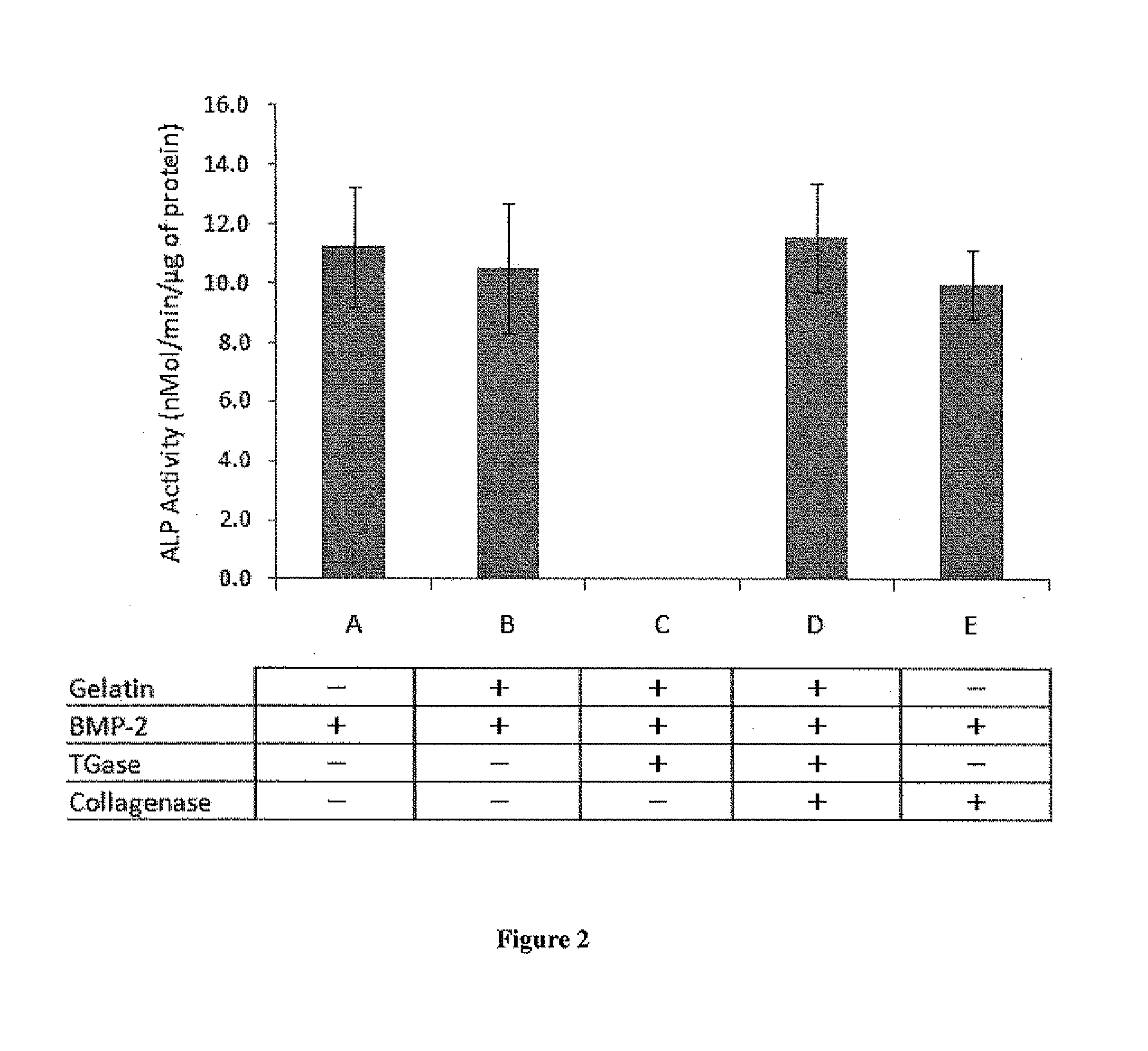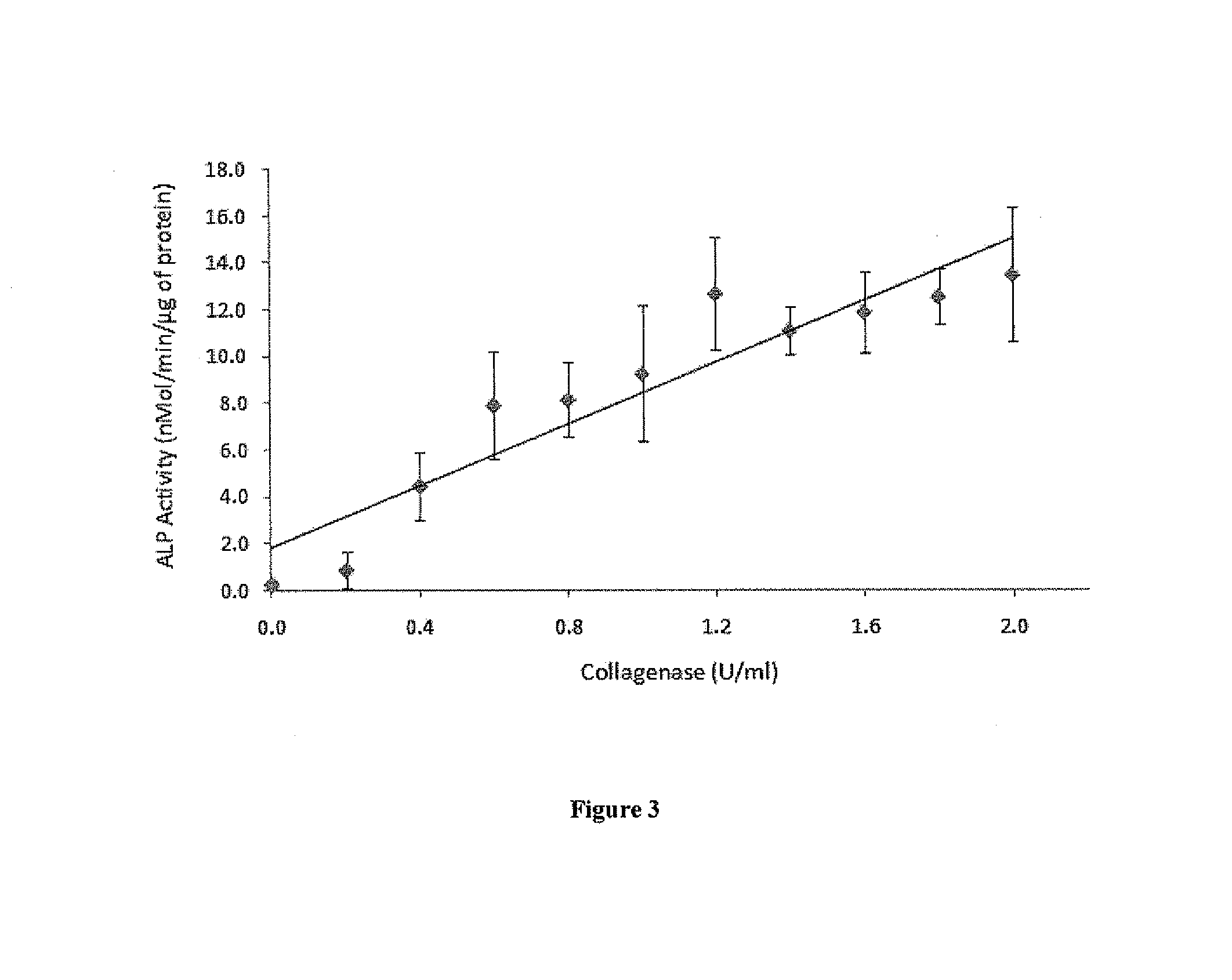Systems and Methods of Cell Activated, Controlled Release Delivery of Growth Factors for Tissue Repair and Regeneration
- Summary
- Abstract
- Description
- Claims
- Application Information
AI Technical Summary
Benefits of technology
Problems solved by technology
Method used
Image
Examples
examples
[0064]BMP-2 Is De-Activated When Crosslinked to Gelatin by Transglutaminase
[0065]BMP-2 is known to transdifferentiate a premyoblast C2C12 cell line by dose dependently increasing alkaline phosphatase (ALP) activity. BMP-2 alone (FIG. 1A), gelatin / BMP-2 (FIG. 1B); and BMP-2 treated with TGase (FIG. 1F) all induced ALP activity at comparable levels. The high ALP activity suggested that TGase or gelatin had no inhibitory effect on BMP-2 activity. However, when BMP-2 and gelatin mixture was treated with TGase, BMP-2 activity was completely lost as exhibited by ALP (FIG. 1G). This indicated that as BMP-2 and gelatin bonded and formed a complex by the action of TGase, the formation of the complex (gelatin-BMP-2 complex) shielded the BMP-2 activity. Significant differences were observed between gelatin-BMP-2 complex and all other BMP-2 containing samples (p <0.001)
[0066]BMP-2 Is Re-Activated from a Gelatin-BMP-2 Complex by Bacterial Collagenase
[0067]To determine whether BMP-2 activity can ...
PUM
| Property | Measurement | Unit |
|---|---|---|
| Biocompatibility | aaaaa | aaaaa |
Abstract
Description
Claims
Application Information
 Login to View More
Login to View More - R&D
- Intellectual Property
- Life Sciences
- Materials
- Tech Scout
- Unparalleled Data Quality
- Higher Quality Content
- 60% Fewer Hallucinations
Browse by: Latest US Patents, China's latest patents, Technical Efficacy Thesaurus, Application Domain, Technology Topic, Popular Technical Reports.
© 2025 PatSnap. All rights reserved.Legal|Privacy policy|Modern Slavery Act Transparency Statement|Sitemap|About US| Contact US: help@patsnap.com



